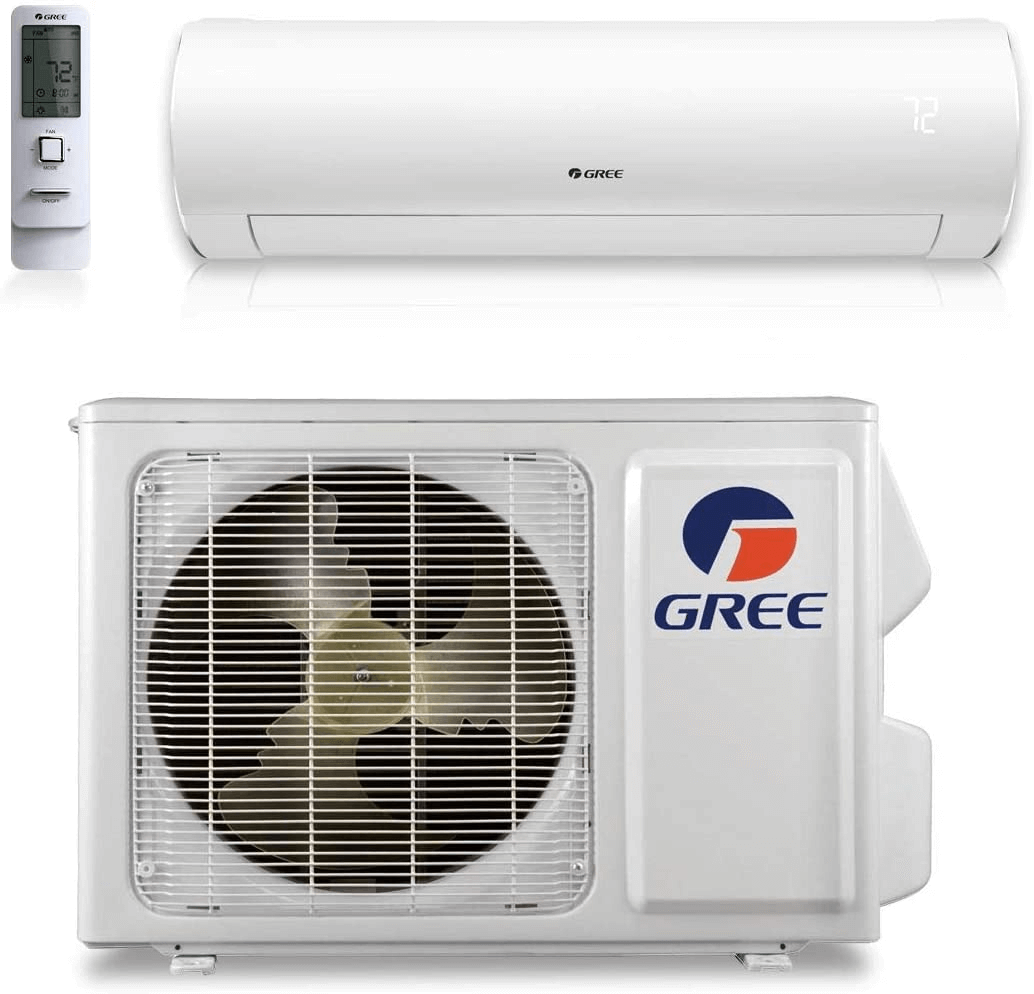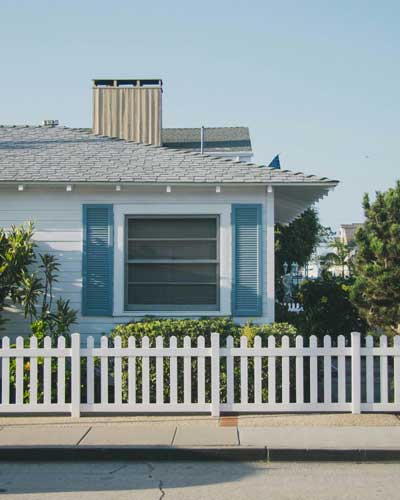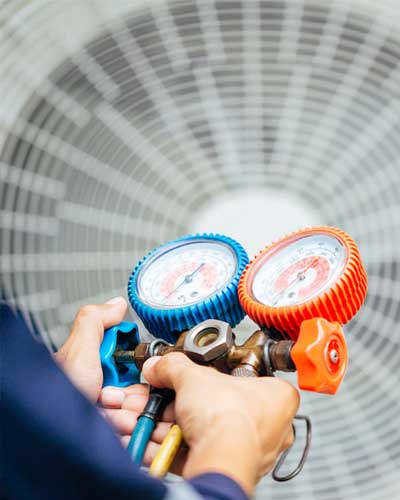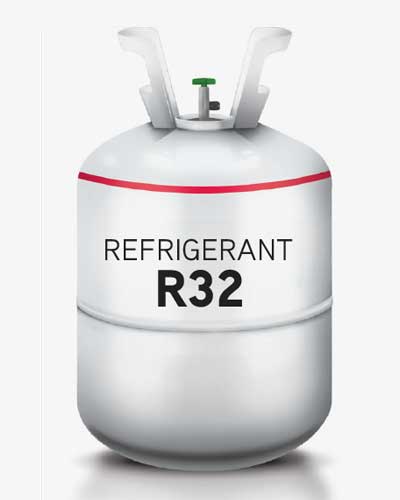
Heat Pumps for Apartment Buildings: From Efficiency to Installation
When it comes to heating & cooling apartment buildings, choosing the right system is crucial. Not only does it impact the comfort of residents, but it also has significant implications for energy usage of the building, costs for the owner, and sustainability of the planet. This guide explores heat pumps as an optimal HVAC system for apartment buildings, exploring everything from their mechanics to their environmental impact.
The Benefits of Ductless Heat Pumps for Apartment Buildings
It is essential to understand the basics of heat pumps before delving further into the subject. Let's start by answering a simple question:
What is a Heat Pump?
A heat pump is a type of HVAC system that transfers heat from one place to another. It works by using the process of heat transfer to absorb heat through refrigerant and transfer it outside when temperatures are high, similar to a standard AC system, but they can do it in reverse when it's cold out to heat your home as well. These devices can extract heat from the air and transfer it indoors, providing a warm and comfortable environment even in cold weather.
Why are Heat Pump Mini-Splits Ideal for Apartment Buildings?
Heat pumps have gained popularity among apartment building owners for several reasons. First, they provide both heating and cooling, making them a versatile choice for providing air conditioning under all seasons and temperatures from one system. Second, they are compact and easy to install because they don't require any ductwork, which can result in significant savings for new construction apartment buildings and take up less space in small apartment units. They also operate very quietly, ensuring minimal disturbance to residents. Finally, heat pump mini-splits are ultra-efficient heating and cooling systems when compared to traditional air conditioning and heating systems, and multi-zone mini-splits offer better control, allowing tenants to heat and cool different zones of their apartments independently. Below we'll explore the benefits of ductless heat pumps in more detail:
Easy Installation in Apartment Buildings
Ductless heat pumps do not require any ductwork, making them easy and quick to install. Ductless heat pump mini-splits generally consist of an indoor air handler and an outdoor compressor unit, connected through a small hole in an exterior wall. This simple setup makes installation costs minimal for apartment buildings because you don't need to run ductwork from the central HVAC system through each apartment.
Quiet operation
Heat pump mini-splits operate quietly, ensuring minimal disturbance to residents. This is important in maintaining a peaceful and comfortable living environment.
Energy efficiency
One of the greatest advantages of heat pumps is their energy efficiency. Unlike traditional heating systems that generate heat through combustion, heat pumps merely transfer existing heat from one place to another. This process requires significantly less energy, leading to lower utility bills and less strain on power grids.
Heat pumps are more efficient at heating than traditional furnace/ boiler systems because instead of creating heat through combustion, they simply move heat around through the heat transfer process, which takes much less energy. They're also more efficient in the summertime when in cooling mode because they're equipped with inverter technology, which allows them to run at the speed necessary to cool the apartment based on it's current temperatures, opposed to traditional AC systems which are either fully on or fully off. Finally, mini-split systems don’t require gas or oil, the heat they provide is fully electric making it a tenant expense in many cities.
Zoning control
Heat pump mini-splits offer better control over heating and cooling, allowing tenants to independently adjust the temperature in different zones of their apartment. This not only provides a better quality of temperature control to apartment tenants, but is also more efficient than traditional HVAC systems which heat and cool an entire home at once. Zoned control promotes both personalized comfort and energy savings.
Environmental Impact
Heat pumps are not just about energy efficiency; they're also a more environmentally-friendly HVAC solution. Traditional HVAC systems, especially those that rely on fossil fuels, emit a significant amount of CO2 and other greenhouse gases into the atmosphere. These emissions contribute to global warming and have detrimental effects on our planet's climate. In contrast, heat pumps, have a much lower carbon footprint.
By simply transferring heat instead of generating it, heat pumps reduce the need for combustion of fossil fuels, leading to fewer emissions. This makes them a cleaner choice for heating and cooling. Moreover, the reduced energy consumption means that there's less demand on power plants, further decreasing the overall carbon emissions.
Recognizing the environmental benefits and the role heat pumps can play in reducing a country's carbon footprint, the government is offering incentives and rebates to promote their installation. These incentives not only make it financially attractive for property owners to switch to heat pumps but also underscore the global shift towards more sustainable and green energy solutions.
Overall, the benefits of ductless heat pumps in apartment buildings are numerous. From easy installation and compact size to quiet operation and energy efficiency, these systems provide a convenient and comfortable living environment for tenants. With zoning control and a lower environmental impact, heat pump mini-splits offer a sustainable solution for heating and cooling in apartments.
Installation Considerations for Mini-Split Heat Pumps in Apartment Buildings
When considering the installation of mini-split heat pumps in apartment buildings, there are a few factors to keep in mind:
Building structure
The design and layout of the building may affect the feasibility of installing mini-split heat pumps. It is important to assess the availability of exterior walls for the installation of the outdoor compressor unit and the placement of indoor air handlers to ensure proper functionality and efficiency of the mini-split heat pump system. Additional building structure components to keep in mind include the availability of electrical wiring and the ability to run refrigerant lines between the indoor and outdoor units.
Some apartment building layouts might not work quite as well with mini-split heat pumps, such as historic apartment buildings. Historic buildings often face regulations that don't allow building owners to alter the aesthetics of the building exterior. Mini-split heat pumps are still a fantastic option for these types of buildings, however the outdoor units will likely need to be located on the roof and fed to the indoor air handlers through ductwork, or piped through closets.
Additionally, depending on the size, it may be more cost effective for an apartment building to be served by a VRF system, as once you approach 10,000 square feet, VRF systems tend to be more cost-effective that heat pump mini-splits.
Lastly, high-rise buildings can pose issues for mini-splits due to limited locations on which to place outdoor units, and lack of accessibility for maintenance.
Electrical capacity
Mini-split heat pumps require electrical wiring to power both the outdoor compressor unit and indoor air handlers. It is important to ensure that the building's electrical system can support the additional load of multiple mini-split heat pump systems if they’re being added to an existing building.
Load calculations
Proper load calculations should be performed to determine the heating and cooling needs of each individual apartment. This will help determine the appropriate size and number of mini-split heat pump units required for efficient and effective operation throughout the building.
Maintenance access
Consideration should be given to the ease of maintenance and servicing of the mini-split heat pump units. Adequate access should be provided for routine cleaning, filter changes, and any necessary repairs or maintenance.
Choosing Between Single-Zone, Multi-Zone Mini-Split, and VRF for Apartment Buildings
When choosing between single zone, multi-zone, and VRF heat pumps for apartment buildings, there are several factors to consider.
Single Zone Ductless Mini-Splits
Single-zone mini-splits are designed to heat or cool a single area or room. Studio or efficiency apartment units generally have an open floor plan, and it is likely that these units can receive adequate heating and cooling from a single-zone system. Additionally, their compact size and flexible installation options make single-zone systems ideal for apartments with limited wall space or architectural constraints.
Multi-Zone Heat Pumps
Multi-zone heat pump systems are designed to provide heating and cooling to several zones or areas within an apartment building. These systems consist of outdoor unit(s) connected to multiple indoor air handlers, each controlling a designated zone. Many apartments have at least one living room and one bedroom, and it is likely that you'd need an air handler in each of them in order to provide adequate heating and cooling to both spaces - In these cases, and in 2-3 bedroom apartments, you'd likely want to install multi-zone mini-splits so that you can provide temperature control for each key room in the space.
Variable Refrigerant Flow (VRF) Systems
These systems offer precise temperature control and energy efficiency by adjusting refrigerant flow to match the heating or cooling demand of each indoor unit. VRF systems can simultaneously cool some areas while heating others, making them ideal for apartment buildings with varying occupancy patterns and climate needs.
VRF systems are particularly suitable for apartment buildings with numerous floors, mixed-use spaces, and a substantial number of units. They excel in maintaining uniform comfort levels across a wide range of settings, providing the flexibility required for large apartment complexes. Additionally, VRF systems often integrate advanced control features that allow building managers to monitor and optimize energy usage, further enhancing their suitability for sizable and complex structures.
Overall, mini-split heat pumps can be a beneficial option for heating and cooling in apartment buildings, offering energy efficiency, personalized comfort, and easy installation. However, careful planning and consideration of various factors are necessary to ensure successful implementation. Contractors are increasingly recognizing the advantages of mini-split heat pumps for apartment buildings, and GREE stands at the forefront of this trend, offering unparalleled expertise and support.
Our online resources are comprehensive, featuring installation guides, troubleshooting tips, system documentation, and insightful FAQs tailored for apartment building installations. Additionally, for those looking to optimize their mini-split system choices for apartment buildings, our System Builder tool is an invaluable asset.
With GREE's extensive resources at your fingertips, contractors are equipped with the knowledge and tools necessary to seamlessly integrate mini-split heat pumps into any apartment building project. Next time you're considering HVAC solutions for an apartment complex, be sure to leverage GREE's System Builder tool to ensure the best results for your clients!





